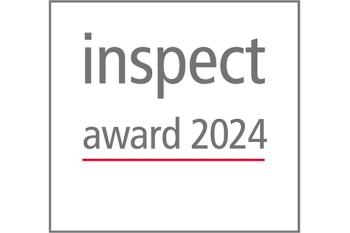Millions of Mirrors
Technology and Applications of Digital Light Processing
Digital Light Processing (DLP) is the technology, originally developed by Texas Instruments, to have the light of a light source reflected onto the projection area by miniscule square micro mirrors. The micro mirrors, operating as a light switch, are positioned on a DMD (Digital Micromirror Device) chip and are responsible for the projection of a single pixel, each. Depending on the resolution such a DMD chip can consist of millions of mirrors, each of them to be switched several thousand times per second.
For many years, DLP technology is well known for powering digital projectors. Soon after commercial introduction, developers and researchers began to transfer the micro display technology into their innovative developments outside traditional projection displays. This has gained speed especially after the introduction of the DLP Discovery development kits, offering a flexible electronics platform to design products for new applications.
But product development in new applications generally demands much more than access to the basic functionalities of such electronics platforms. Efficient data interfacing hardware and software is required as much as a versatile light engine, providing display illumination from a light source and imaging the micro display to the relevant object or receptor.
Visitech's series of Luxbeam DLP Light Engines provide engineers with a professional light engine development platform already during early stages of their development projects. The fully functional integrated modules include electronics, optics and light source as well as pre-installed Luxware software to control the DLP micro display functionalities. Different optical configurations and a selection of various light sources such as arc lamps and high brightness LEDs enable straight forward integration of the light engine into individual product developments.
Application Example: 3D Optical Metrology Systems
3D optical metrology systems are being implemented across an array of diverse applications that include 3D biometrics, inspection equipment, forensics, engineering design, alignment equipment, dermatology and cosmetics, biomedical applications or product manufacturing. Specific parameters are measured in these applications such as 2D and 3D surface shapes, contours, roughness, and discontinuities.
Structured lighting, i.e. a series of well defined light bands or stripes, is illuminating an object. A high resolution camera, located at some pre-defined angle different from the illumination angle, records these bands or stripes on the object. High level processing of the acquired images using optical triangulation principles and sophisticated phase shifting algorithms then extrapolates the raw data to a multidimensional image.
The measurement accuracy of these systems is a function of accuracy and repeatability of controlling light bands (or stripe width) and gray scale. With high resolution and precise control of individual pixels in the micro display and high fidelity in gray scale bit depth, fringe projection with Luxbeam Light Engines makes it possible to repeatedly project fringe patterns with varying widths, orientations, and phase shift values. This enables engineers to build high accuracy 3D optical measurement systems with measurement accuracy down to 1/10 bandwidth (<1 micron).
Technical Benefits in Industrial Applications
There are a number of features that make the DLP technology specifically interesting for emerging and industrial applications, i.e.
- each pixel is digitally controlled,
- high reflectivity,
- polarization independent, increased light efficiency,
- ability to work with IR, Visible, and UV light,
- proven technology with over 18 million chipsets shipped,
- can use PWM to achieve a very linear gray scale,
- fast switching speed in the microseconds,
- variety of resolutions from XGA to 1,080p and WUXGA (1,920x1,200 pixels).
Combined with these display features, the Luxbeam Light Engines have already demonstrated to be versatile and flexible for research and engineering, enabling product developments in the broad range of industrial DLP micro display applications such as hyper-spectral imaging, 3D security, spectroscopy, medical engineering, augmented reality, rapid prototyping, 3D volumetric display, high performance imaging, and machine vision.
As an independent DLP Design House and Texas Instruments' leading value adding partner, Visitech's engineering team has aggregated in-depth expertise in development and manufacturing of DLP electronics and light engines and supports product developments in many areas of emerging and industrial micro display applications.
Contact
Visitech AS
P.O.Box 616
3003 Drammen
Norway
+47 32 22770 0
+47 32 22770 1








